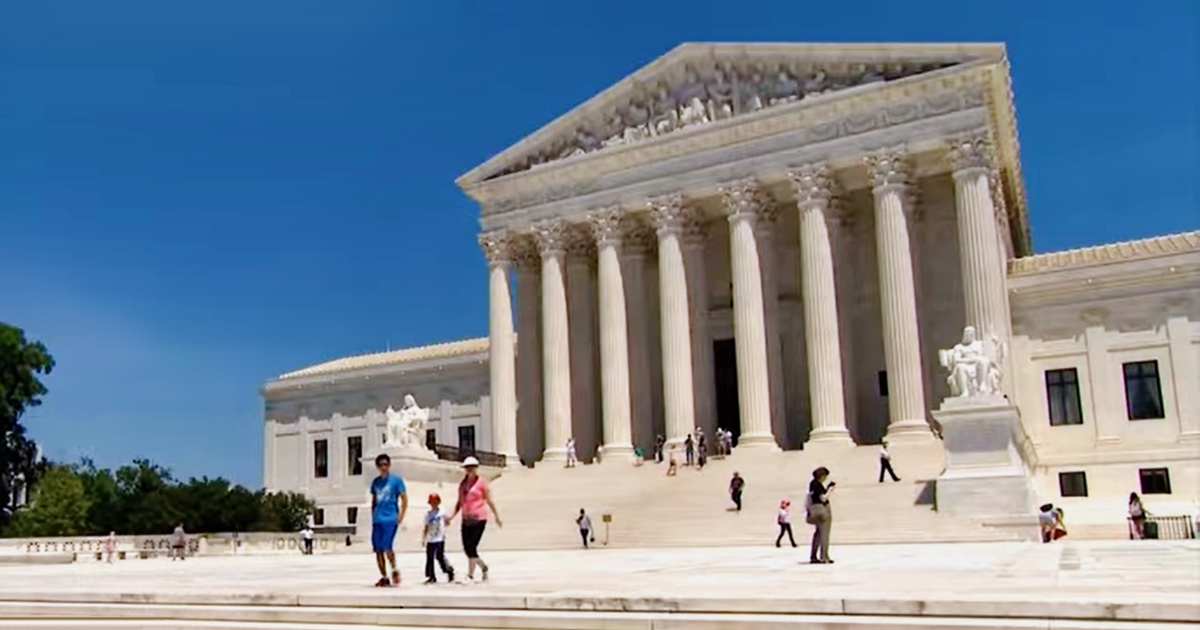
On Tuesday, the Supreme Courtroom rejected unbiased state legislature thought in a 6-3 decision, wherein as many Republican-appointed justices joined the majority as dissented from it.
On Monday, the Court determined not to hear a case that may have threatened an African-American majority congressional district in Louisiana. A couple of weeks previous to that, the Courtroom dominated that Alabama had violated the 1965 Balloting Rights Act by means of packing African-American voters in the state into a single district.
In 2021, a majority together with Justice Clarence Thomas rejected a problem to the Reasonably priced Care Act. The year prior to that, the Court docket made up our minds that Title VII of the Civil Rights Act of 1964 protected homosexual and transgender staff from hostile employment selections on the basis of their identity. And some years earlier than that, it created a constitutional right to gay marriage.
But even in the face of countless choices with the aid of the originalist majority-Courtroom, 12 months in and year out, demonstrating that it’s anything else however a partisan monolith, the press continues to treat it as such.
A PBS phase from ultimate August fretted that the “U.S. Supreme Court’s an increasing number of partisan divide” was elevating “questions about ethics.” At The Atlantic, Adam Serwer has accused the justices of “mendacity” once they explain that publish that differing judicial philosophies — now not partisan allegiances — give an explanation for their votes.
And on the day of Amy Coney Barrett’s confirmation to the Supreme Court in October 2020, the New York Instances ran seven consecutive opinion items panicking about her ascension, with some advocating for court-packing and others advocating for the Court’s substitute altogether.
Even on Tuesday, as some progressives on Twitter celebrated the Courtroom’s most recent resolution, others insisted that the ruling wait used to be a part of a nefarious effort to lull observers into pondering the courtroom to be “fantastically average,” as FiveThirtyEight’s Nathaniel Rakich put it.
It feels just like the Supreme Courtroom is getting its liberal-pleasant rulings out of the best way early—perhaps in a bid to get (untimely) favorable coverage for being “exceedingly average.” This technique labored in 2021! https://t.co/JvAxhfbYHR
— Nathaniel Rakich (@baseballot) June 27, 2023
“Remember that, justices are politicians — they comprehend work a news cycle!” he added in a practice-up.
This kind of conspiratorial analysis is embarrassingly endemic to the media’s coverage of the Court and is a disservice to the public. For the originalist wing, it’s “heads, you’re a partisan hack; tails, you’re a suave partisan hack.”
For the reason that media is unwilling to have interaction with the similarities and variations among the many originalist wing’s members’ judicial philosophies, or the fact that the justices are sure via the info of each and every person case, they attribute selections they oppose to political allegiances and people they choose to political machinations.
Rakich’s psychological gymnastics are gratuitous. Actually, the reason for the Courtroom’s decisions is unassuming: The justices, every of whom brings their very own approach to interpreting the law, vote consistent with these interpretations. Justice Neil Gorsuch has a civil libertarian streak. Justice Thomas is irreverent of earlier precedents. Justices John Roberts and Brett Kavanaugh usually suggest narrower rulings. Their completely different tendencies result in divergent votes in disparate circumstances.
Curiously, the media never raises considerations about why the Court’s liberal wing nearly by no means finds itself divided on the controversial cases that so often split the originalists. Its march in lockstep is not noted while the originalist wing’s is fabricated. Partisanship and political reasons can handiest be attributed to Republican appointees; it’s a daunting abandonment of purpose that may only be chalked as much as the partisan factors that the press initiatives onto conservatives.
The media’s insistence on instructing the general public to view Supreme Courtroom choices throughout the lens of partisanship is a long way extra guilty for rising mistrust of the Court docket than these decisions themselves. When the media devotes an inordinate period of time to telling the general public it will have to be suspicious of the judiciary, it will have to come as no surprise when it is.
Whether it’s laziness or malice or simply pure partisan brain worms that’s the reason for this misleading coverage, those ready to treatment it have a responsibility to take action.
The publish The Media’s Supreme Court Brain Worms Are an Embarrassing Disservice to the Public first seemed on Mediaite.



